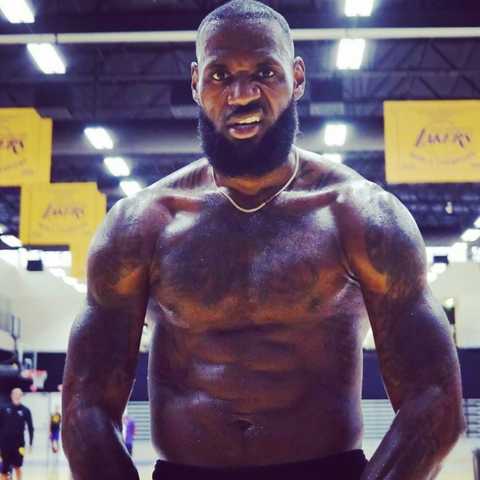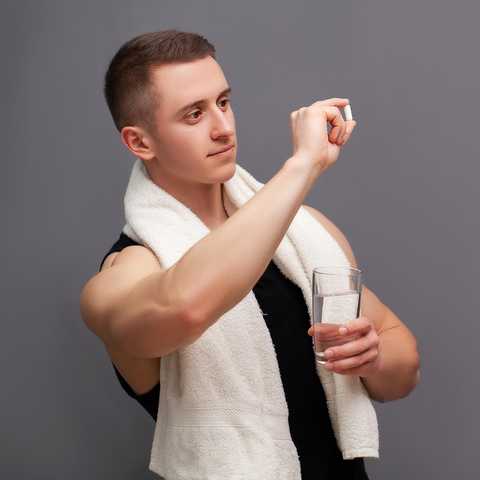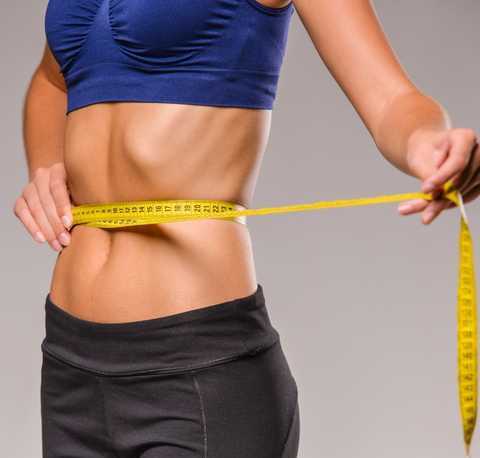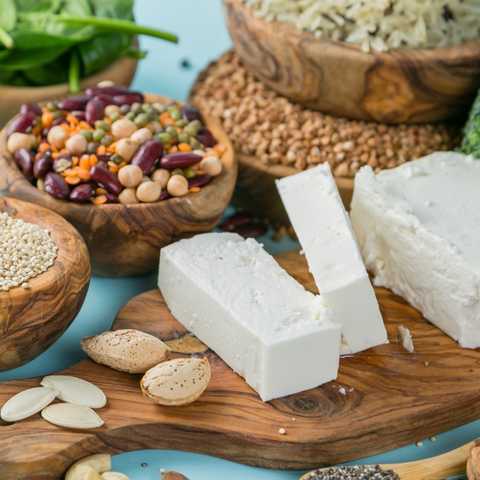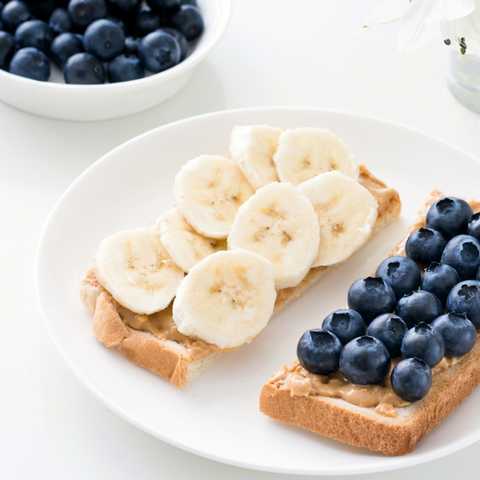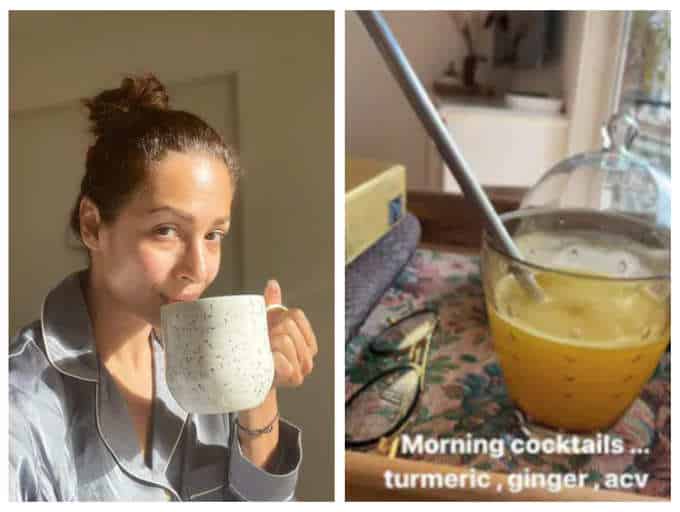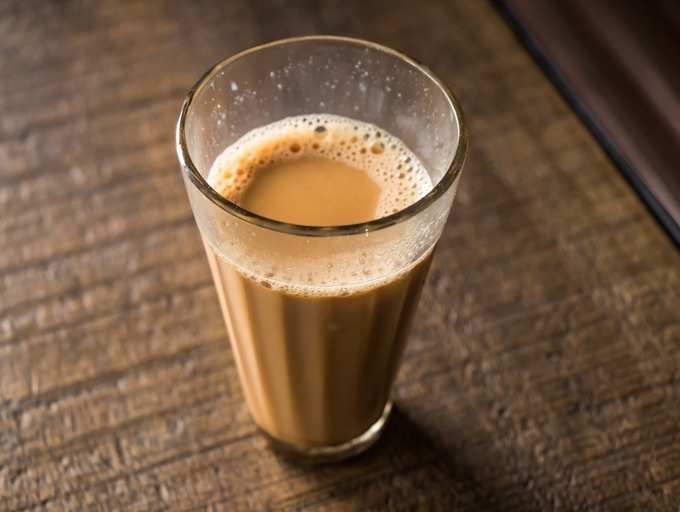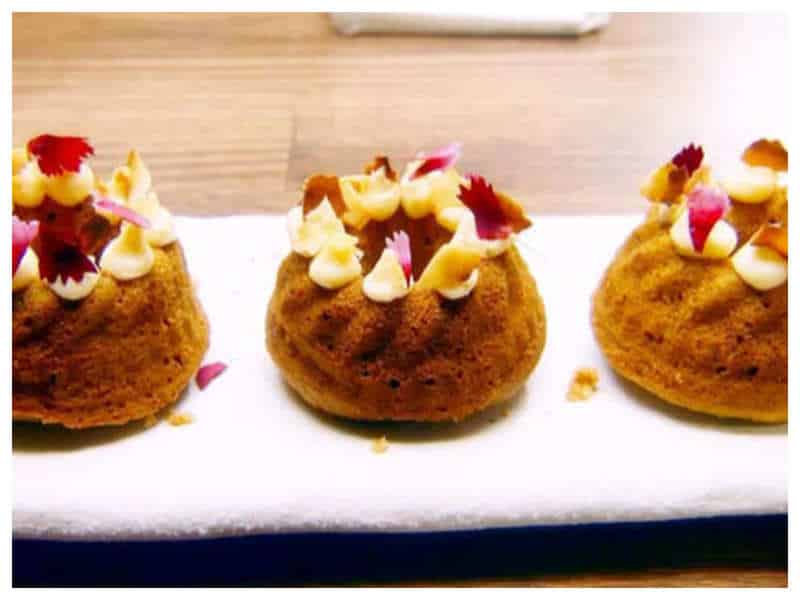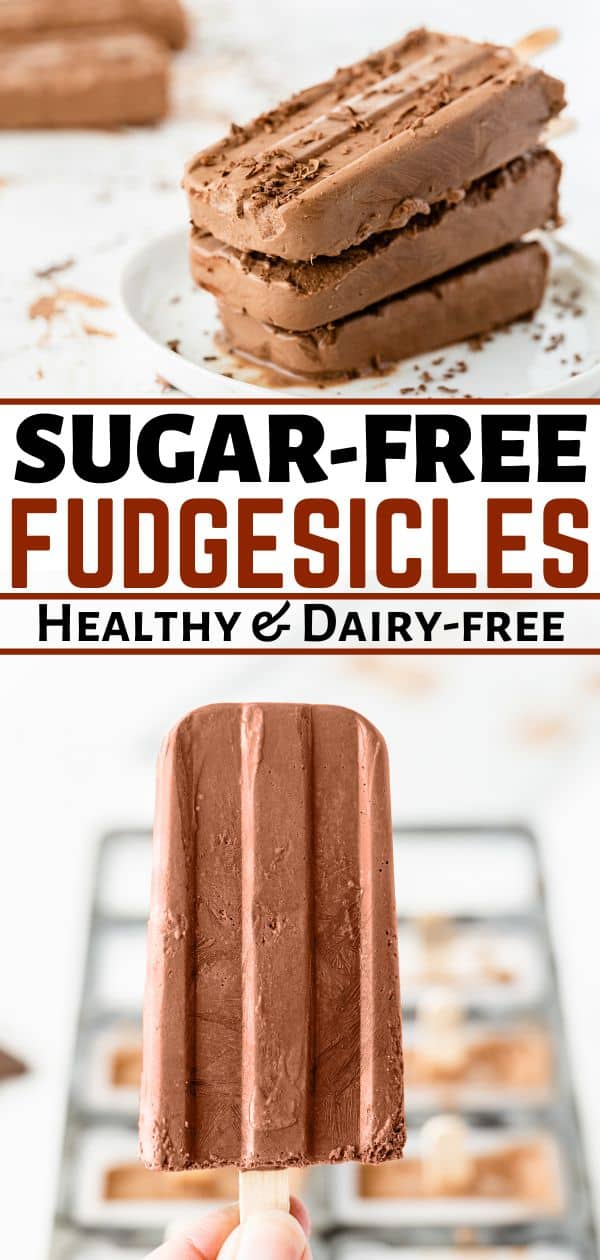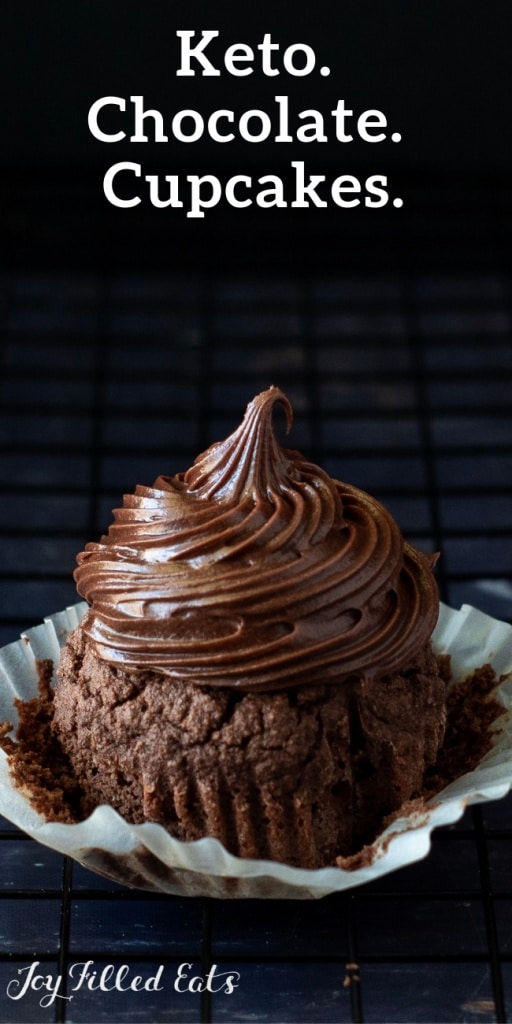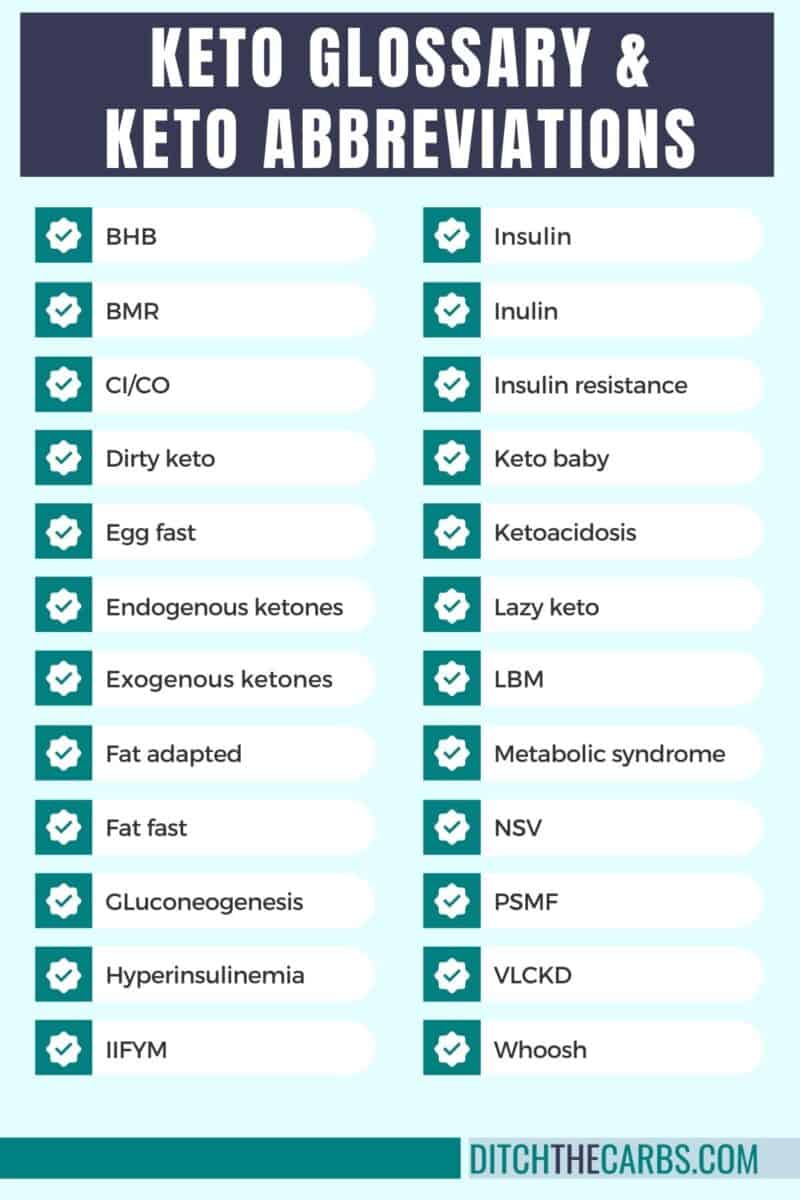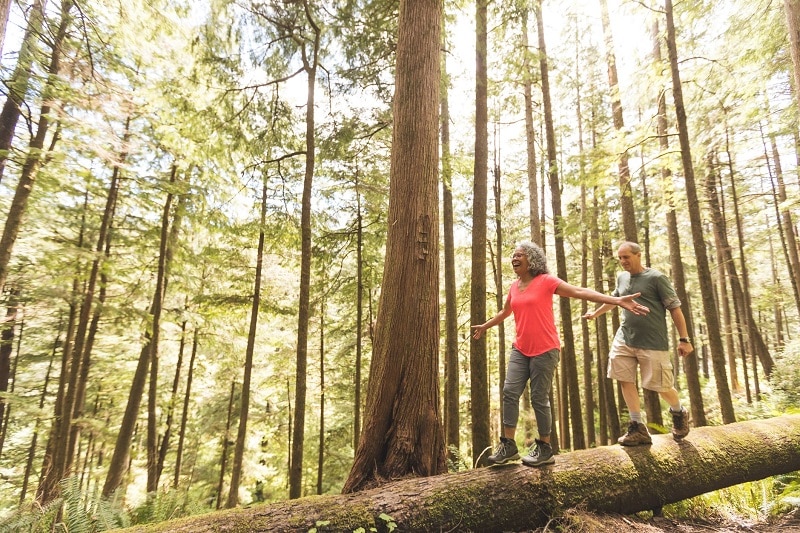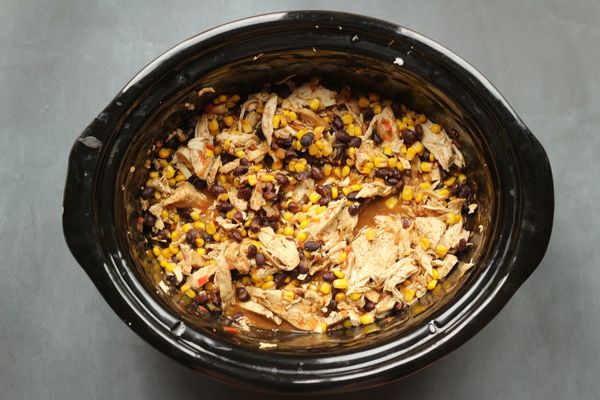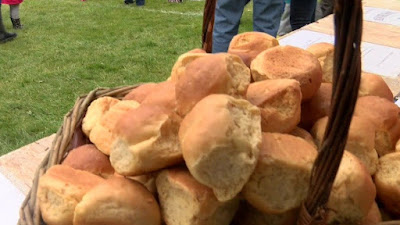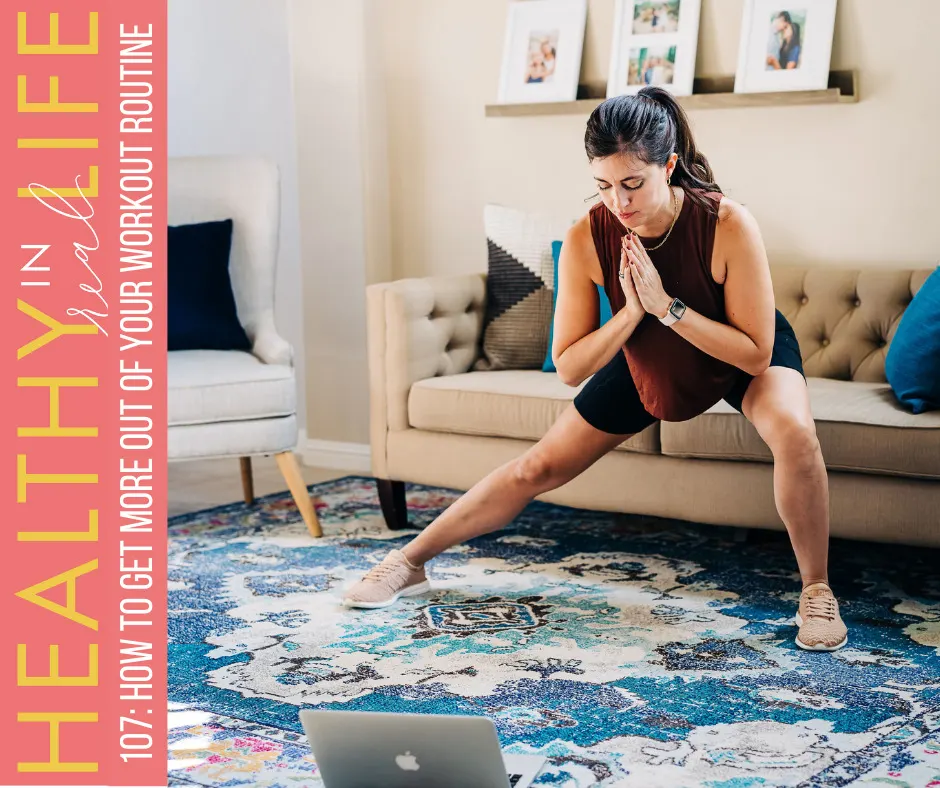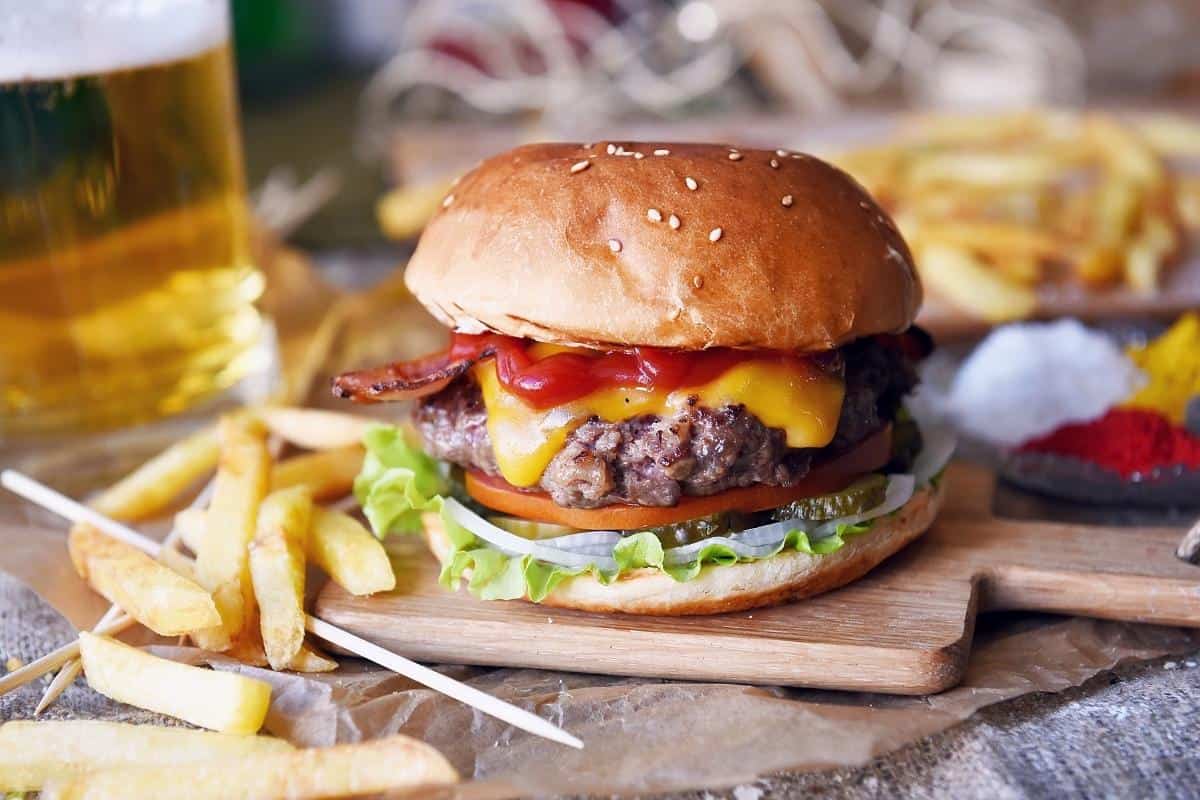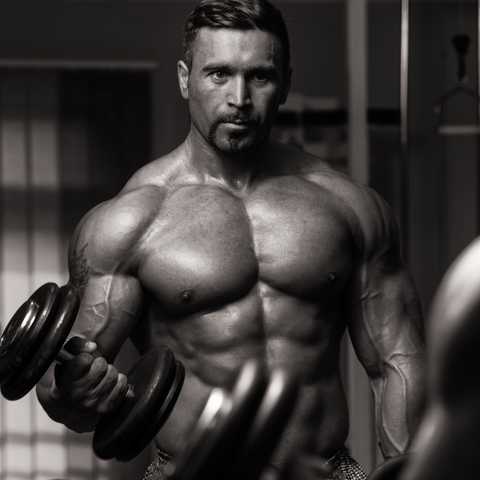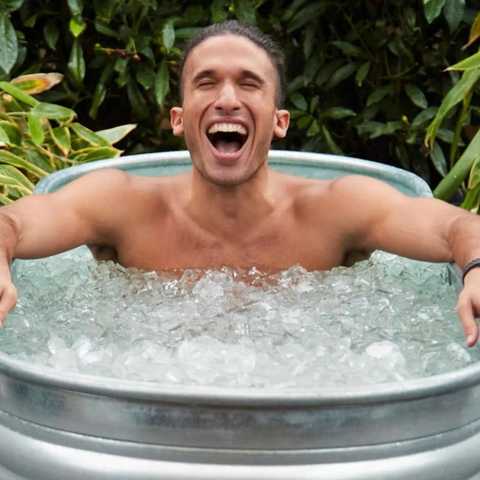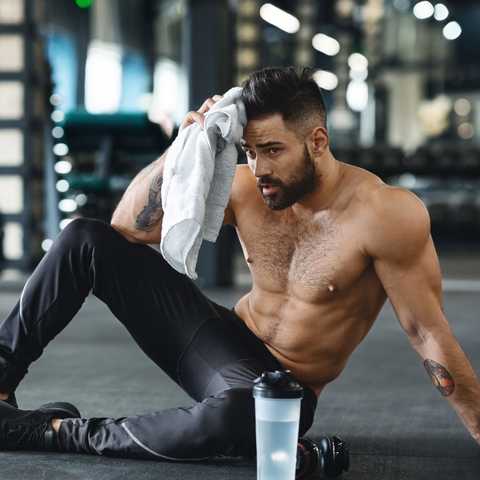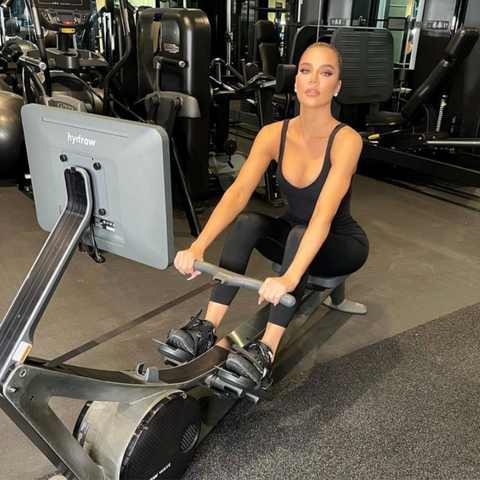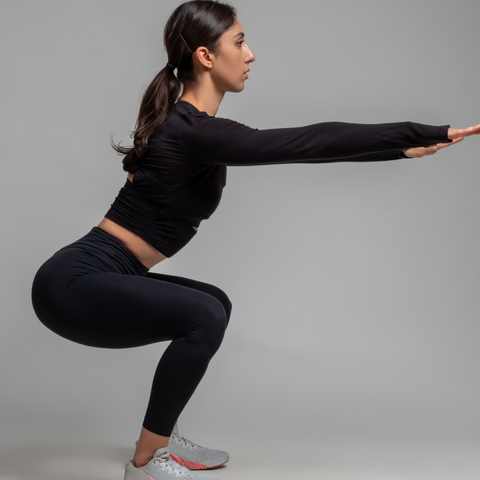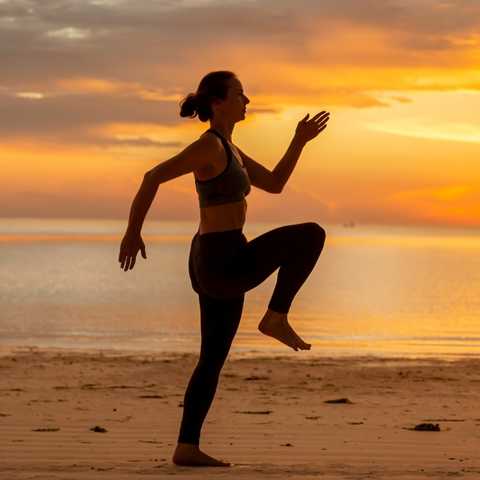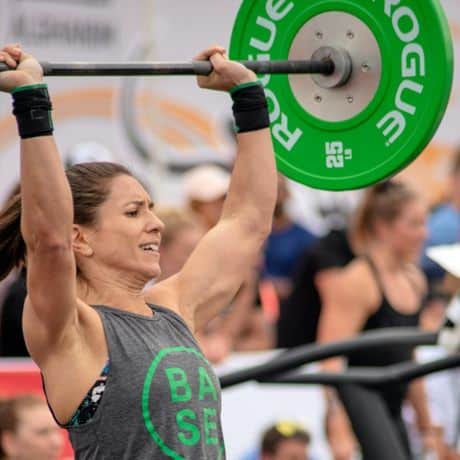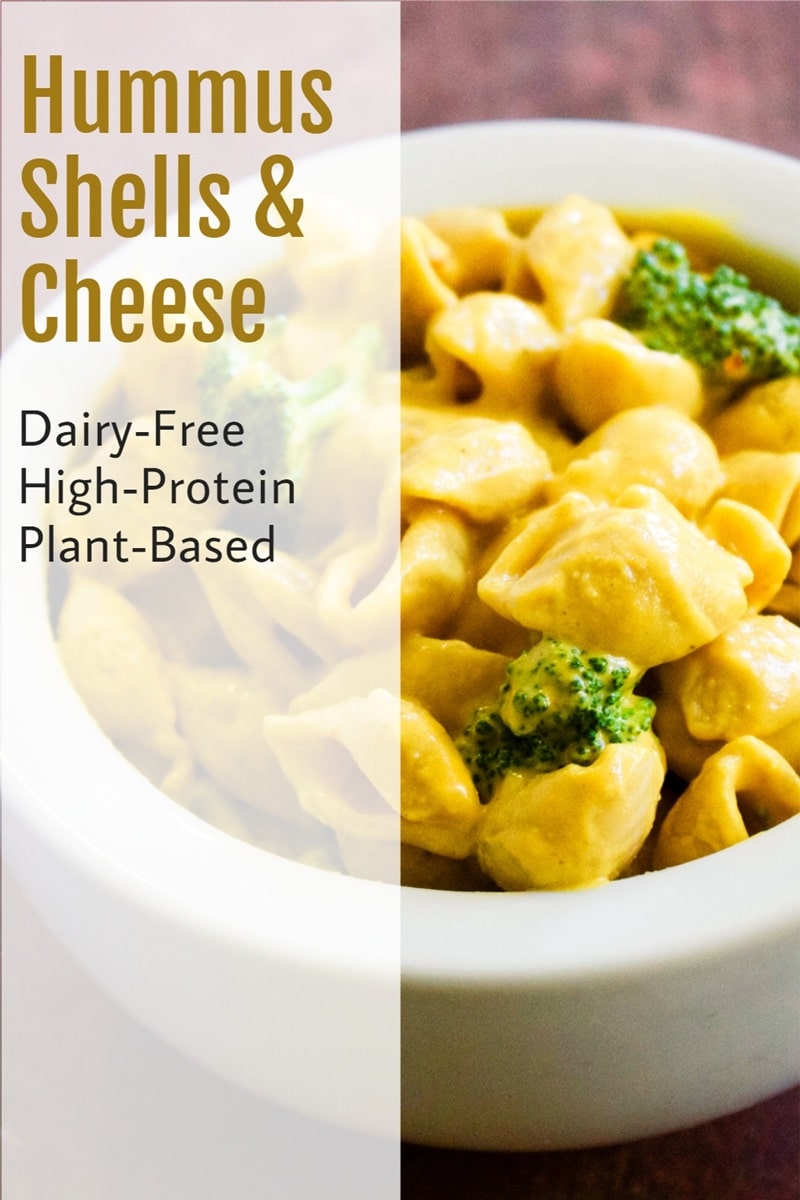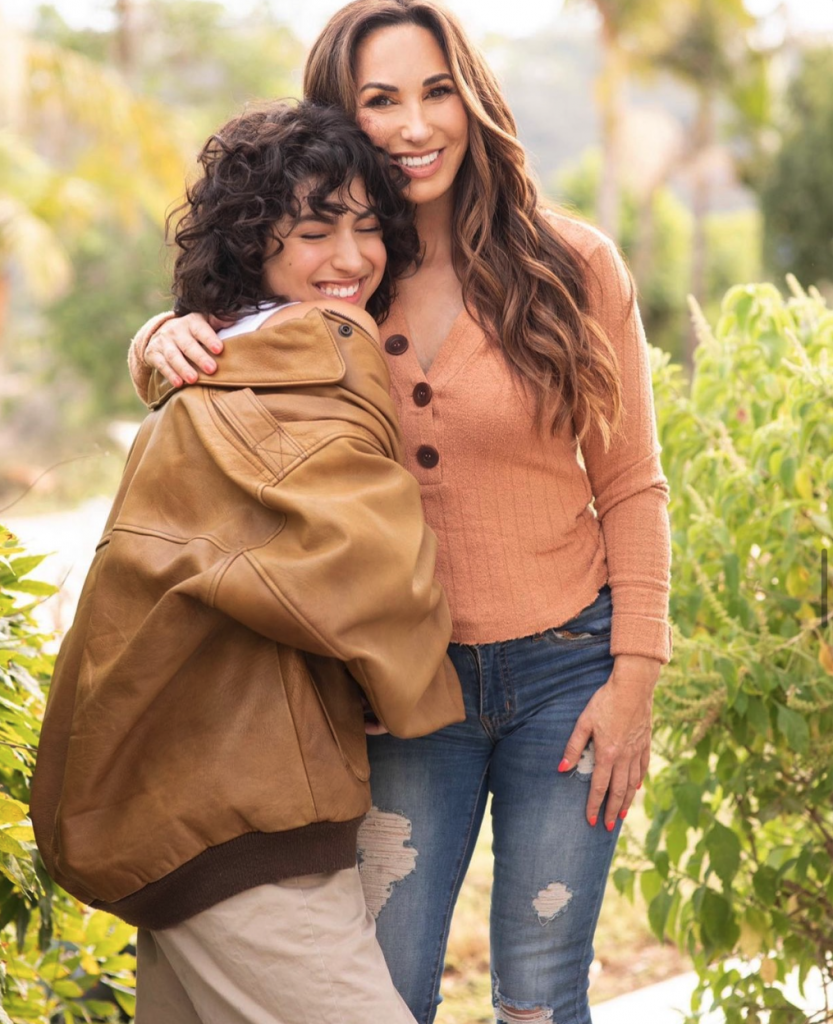Fortunately, the glutes are a great example of a lower body muscle group that can easily be done in the comfort of your living room.
With bodyweight exercises like lunges and hip thrusts, to those that incorporate dumbbells, such as deadlifts and split squats, there is no shortage of glute-burning options available, even when you don’t have access to a gym.
We’ve taken the best bodyweight and dumbbell glute exercises and turned them into awesome at home glute workouts. Prepare to feel that booty burn!
Table of Contents:
- Glutes Muscles Anatomy
- The Best Glute Workouts At Home
– The Best Bodyweight Glute Workout At Home
– The Best Dumbbell Glutes Workout At Home - Programming Tips For At Home Glute Workouts
- The Best Bodyweight Glute Exercises
- The Best Dumbbell Glute Exercises
- Additional At Home Glute Exercises
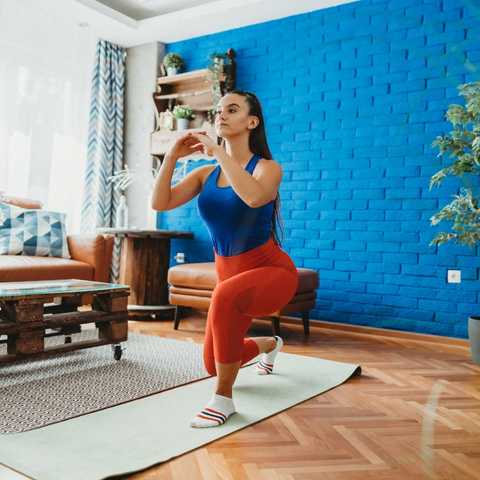
Glutes Muscles Anatomy & Functions
Before we get into our best glute workout at home, it’s important to understand glute muscle anatomy. Here’s an overview of the glute muscles and their functions.
Gluteus maximus:
The largest of the glute muscles, its primary function is extending the hips and hyperextension. The glute max’s size allows it to generate large amounts of force as it works during movements like climbing steps or running.
Unfortunately, constant sitting can cause a condition called glute amnesia, which means your brain has difficulty connecting to your glutes and activating them.
Training them is helpful for counteracting too much sitting. Movements like hip thrusts, Romanian deadlifts, back and front lunges, and split squats are great for activating the gluteus maximus.
Gluteus medius:
The glute medius is smaller, lies beneath the gluteus maximus, and is responsible for hip abduction and stabilizing the hip joint.
Movements like clamshells, curtsy lunges, and lateral band walks are great for targeting this muscle.
Gluteus minimus:
The smallest of the three, the glute minimus’ functions are similar to the glute medius, stabilizing the hip and pelvis and abducting and internally rotating the thigh.
Exercises like a side lying leg lift, clamshell, or lateral band walk work great for targeting the glute minimus.
Now that you understand which muscles we’re working, let’s get right into the best glutes workouts at home!
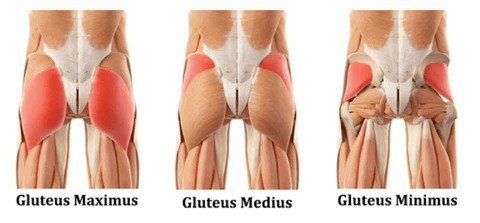
The 2 Best At Home Glute Workouts
We’ve included one bodyweight workout, in addition to one that prioritizes dumbbell exercises.
If you have dumbbells, use the dumbbell workout as it will enable you to continue with progressive overload. If you don’t have any weights, the bodyweight version will certainly do the trick.
The bodyweight workouts will use RPE, and if you don’t have a wide range of dumbbells, you’ll likely need to use RPE for the weighted routine as well. Don’t worry; we’ll explain exactly what RPE is after going over the workouts.
For the bodyweight exercises, perform 2-4 sets of each exercise using an RPE of 8. For the superset exercises in the dumbbell workout, perform the exercises back-to-back, for a total of 2 times.
Bodyweight Glutes Workout At Home:
|
Exercise |
Sets |
RPI |
|
Glute Bridge |
3 |
8 |
|
Glute Kickback |
2 |
8 |
|
Single Leg Deadlift |
3 |
8 |
|
Back Lunge to High Knee |
2 |
8 |
|
Curtsy Lunge |
2 |
8 |
|
Plie Squat |
3 |
8 |
At Home Dumbbell Glutes Workout:
|
Exercise |
Sets |
Reps |
|
Superset: Glute Bridge Donkey Kicks |
2 2 |
10 10 |
|
DB Hip Thrust |
3 |
8 |
|
DB Romanian Deadlifts |
3 |
12 |
|
DB Offset Back Lunge |
2 |
12 |
|
DB Side Lunge |
2 |
10 |
|
DB Split Squats |
2 |
12 |
|
Superset: Plie Squats Walking Lunges |
2 2 |
20 10 |
Programming Tips For Best At Home Glute Workout
No matter how you train and what exercises you do, progressive overload is key for building and toning muscle. You can make your workouts harder by slowing your tempo, adding reps, and increasing your weight.
However, we understand that most people don’t have access to a whole stack of dumbbells. Even after a short time, weights that were once challenging will become too easy for these workouts.
Enter the rate of perceived exertion. RPE is a method that uses a scale to help you understand how hard an exercise should be when you don’t have heavier weights available.
Use a scale of 1-10 and aim for an RPE of 8. This means you’ll be at about 80% of failure, which is tough enough to be challenging and help you grow but enables you to leave a few reps in the tank.
This means that the number of reps that once felt like an 8 will eventually feel more like a 6. When this happens, it means you’re improving, and now need to pump out a few more reps.
You can track this weekly to see your progress even if you don’t have the option to use heavier weights.
Another strategy, if you are achieving your reps easily, is to slow down the tempo during each portion of the movement and focus on maximum activation of the glutes. You want to feel your glutes burning and working as much as possible.
The Best Bodyweight Glute Exercises
You’ve got your workouts, and now all you need is step-by-step directions for each of the exercises! We’ll start by going over the best bodyweight glute exercises.
One thing to keep in mind with bodyweight exercises is that you will be training as if you are working on muscular endurance, meaning the reps are much higher than when training for hypertrophy or strength.
Even though the reps are high, don’t go so fast that you cannot connect to the muscle.
1. Glute bridge:

The glute bridge is often used as a warm-up to activate the glutes during a gym session, but it can also be used in a bodyweight home workout.
This exercise is extremely versatile and has many variations that can be done with or without a load.
It will get the glutes firing immediately and help combat too much sitting.
How to do the Glute Bridge:
- Lie with your back on the floor, your knees bent, and your feet flat on the ground. Your arms should be out to each side, with palms on the floor.
- Keeping your rib cage relaxed and arms at your sides, squeeze your glutes to lift your hips as high as possible until your knees, hips, and shoulders are straight.
- Pause for a second, then slowly lower back to the starting position.
2. Back lunge to high knee:
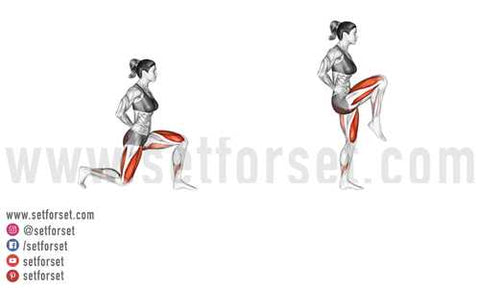
Any lunge variation is a unilateral exercise that trains one leg at a time. This is great for fixing imbalances in your lower body muscles and ensuring each hip works correctly to protect your body.
This lunge exercise adds some core work and increases your heart rate as you bring your working leg back and then to the front into a high knee position.
How to do the Back Lunge to High Knee:
- Standing tall with your feet hip-width apart, step back with your right leg, lower your right knee toward the floor, and bend your front leg to load the glutes.
- Lower down as close to the floor as you can while maintaining a vertical upper body and keeping 90% of the weight in your front leg.
- Drive through the front foot to return to a standing position and lift your knee in front of you while keeping your knee bent at a 90-degree angle. Stand tall during this portion of the exercise.
- Pause for a moment with your knee in line with your hip and then repeat by stepping back into the lunge.
3. Plie squat:
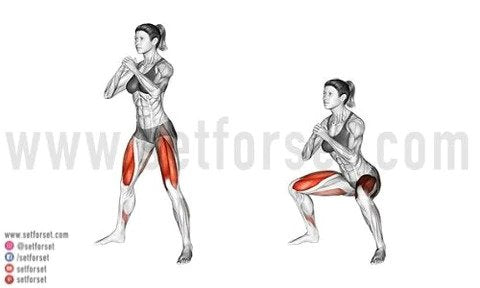
This squat variation leverages putting your lower body in a different position to target the glutes and the inner thighs.
Instead of your normal squat stance, you will be wider with your toes pointed to a 45-degree angle.
How to do the Plie Squat:
- Start standing wider than hip-width apart and turn your feet out to a 45-degree angle.
- Bend your knees and reach your glutes back as you descend into your squat while ensuring your knees and feet do not collapse inward.
- Lower down as far as you can while keeping a vertical upper body, and slowly return to the starting position by squeezing your glutes to extend your hips.
4. Single-leg deadlift:
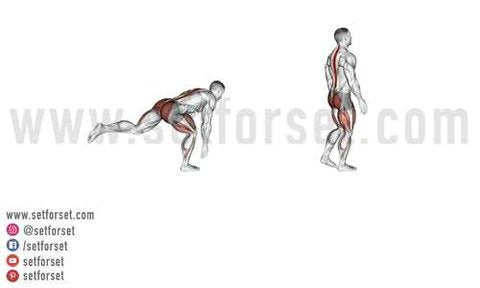
This hip hinge exercise is fantastic for simultaneously strengthening your back, core, and legs.
The single leg deadlift is another unilateral exercise that will help fix imbalances in the hip while improving your balance by strengthening the hip complex.
How to the Single Leg Deadlift:
- Begin standing with feet hip-width apart and soft knees (not locked out). Lift your right foot an inch off the floor, keeping your foot flexed and your leg engaged.
- Keeping your right leg straight and your foot pointed forward, drive your heel straight back and, at the same time, hinge forward with a flat upper body. Your left leg should remain relatively straight with your left foot firmly planted on the ground.
- Keep hinging until your body is one straight line that is parallel with the floor. Keep your arms straight, reaching toward the floor.
- Squeeze your glute and drive your upper body back to return to the starting position; repeat slowly.
5. Straight Leg Glute Donkey Kick:

This movement is excellent for hitting the gluteus maximus. It is often paired in supersets with fire hydrants but is just as effective in bodyweight form if you focus on feeling your glutes contract.
How to do the Glute Donkey Kick:
- Set up on all fours with hands under your shoulders and knees under your hips
- Straighten your working leg as you extend it behind you, and raise it upward.
- Return your leg down to starting position and repeat.
6. Curtsy lunge:
This lunge variation is great for hip stability. Regular lunges are also excellent for the glutes, but the lateral movement of this exercise helps train important underworking muscles like the glute medius, which stabilize the hip.
How to do the Curtsy Lunge:
- Stand with your feet shoulder-width apart and your arms at your sides or on your hips.
- Shift your weight into your left foot and step back behind your body diagonally with the right as if you are performing a curtsy. Keep your torso upright.
- Lower the back leg until it’s close to the floor. Your front left knee should be bent as you focus on keeping most of the weight in the front working leg.
- Begin to straighten your left leg by driving through your heel and bringing the right leg back around to the starting position.
Curtsy Lunge Demo on YouTube
The Best Dumbbell Exercises For At Home Glute Workouts
When it comes to building muscle and improving body composition, resistance training is always king.
If you are fortunate enough to have access to dumbbells at home, it will open up many doors for more glute-building exercises when putting together your own butt workout.
Even if you don’t have an entire rack of every choice of weight, you can still utilize what you have at home effectively. And if you don’t have any dumbbells but are interested in getting some, check out our article on the best dumbbells to add to your home gym!
1. Hip thrust:
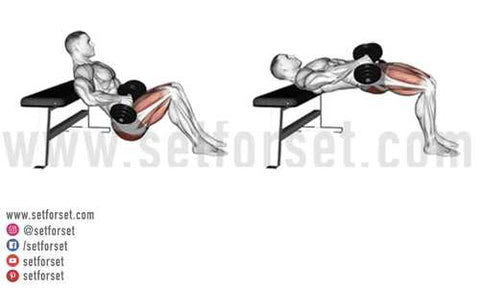
To the untrained eye, this looks the same as a glute bridge. Although they are similar exercises, the hip thrust is generally performed with shoulders elevated on a bench (or something similar) and requires weight.
In the gym, the most common variation is the barbell hip thrust, but at home, the dumbbell variation works just as well.
The elevation of your back also gives you a bigger range of motion throughout the movement. You can use one dumbbell, holding it with both hands, or two dumbbells, one in each hand.
How to do Hip Thrusts:
- Start sitting on the floor with your knees bent and feet hip-width apart. Your upper back will rest against the edge of a weight bench or chair (or something similar that you have access to at home).
- Place your dumbbells across your hips and hold them here.
- Squeeze your glutes to drive the dumbbells and hips up until your hips are in line with your shoulders and knees.
- Pause at the top and slowly lower down without letting your back round until you are just a few inches away from the floor. Repeat.
2. Offset Dumbbell back lunge:

This back-stepping lunge variation is fantastic for targeting the glute medius. It will work almost every lower body muscle, and on top of this, only having weight on one side challenges your hips to balance your body.
It also will work the core muscles as they support your upper body in resisting the weight on one side.
How to do the Offset Dumbbell Back Lunge:
- Grab a dumbbell in your right hand and hold it off to your side as you stand upright with your feet shoulder-width apart. Force the dumbbell away from your body like you are making space between your armpit and your side.
- Step back with your left leg while keeping 90% of your weight in your right leg as you take the back knee toward the floor and bend your front leg to load the glutes. Your left heel will be off the floor.
- Maintain an upright upper body as you lower down as close to the floor as possible. Drive through your heel and straighten your leg as you return to the starting position.
3. Romanian deadlift:
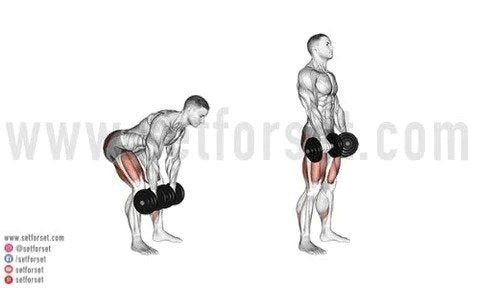
Romanian deadlifts are a deadlift variation that works your entire posterior chain at once. The glutes get excellent activation during the hip extension portion of the movement as you return to the starting position.
Pro Tip: At the top of the move, make an active effort to contract your glutes to ensure they’re fully activated.
How to do the Romanian Deadlift:
- Stand with feet hip-width apart, holding dumbbells in each hand with palms facing the front of your thighs.
- Pull your shoulders back and hold this position as you bend at the waist hinging your hips back as your chest moves forward toward your thighs. Slide the dumbbells down your lower body, keeping them close to you. Don’t overreach for the floor.
- Lower down as far as you can while keeping your back flat and glutes engaged. Then, squeeze your glutes to push your hips forward as you drive your upper body up and back to the starting position.
4. Side lunge:
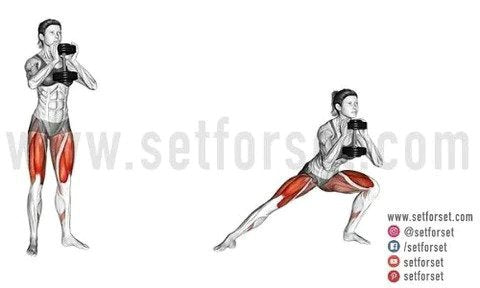
This lateral lunge provides all of the benefits that regular front and back lunges do, while also adding a stability aspect as it improves hip, groin, and ankle mobility.
It can be a bit challenging to master, but that makes it all the more important to practice as most of us don’t get enough side-to-side movement in our daily lives.
How to do the Side Lunge:
- Start standing with feet shoulder-width apart, holding a dumbbell in each hand, or one dumbbell in front of the chest in a goblet hold.
- Keeping your feet straight forward, step your left foot out wide while keeping your right leg straight. As your left foot plants into the ground, bend your left knee, lowering down into a single-leg squat while keeping your upper body upright.
- Keep your right leg straight after you’ve lowered as far as you can under control, and power through your left foot to push the ground away and return to the starting position.
- Make sure at the bottom of the lunge that your knee is in line with your foot and hip.
5. Split squat:
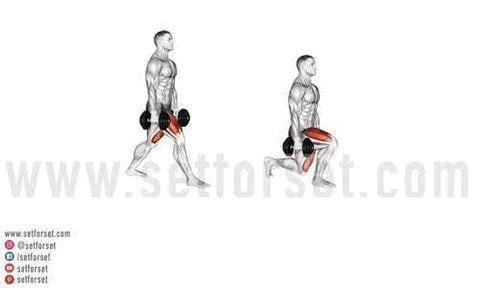
The split squat is another unilateral exercise that will even out your lower body muscle imbalances.
This stationary lunge takes some of the stability and balance out of the equation and allows you to increase the weight used if you have heavier weights available.
How to do the Split Squat:
- Start standing with feet hip-width apart, holding one dumbbell in each hand.
- Step your right foot forward the same distance you would use for a lunge. Once you have established your position, you do not need to move your feet again.
- Bend your front leg as you lower the back knee toward the floor. Keep your body upright and 90% of your weight in your front leg. Sink as low as you can, stopping just before the floor.
- Push through your front foot to allow the glutes to extend and bring your body back to the starting position. Repeat.
Additional At Home Glutes Exercises
Here are some more great glute exercises you can swap in from time to time. They’re all effective and can help you avoid monotony in your workouts.
- Kickstand Romanian Deadlifts
- Dumbbell Step Ups
- Fire Hydrants
- Dumbbell Swings (use a kettlebell if you have one)
- Lateral Band Walks
- Clamshells
- Goblet Squats
- Sumo Squats
- Side-Lying Leg Lifts
Train Your Glutes Anytime, Anywhere
Thanks to these programs, there truly is no excuse for not getting a fantastic glute workout in. Whether you have no weights, one dumbbell, or a whole collection, the glutes are incredibly easy to train at home.
What are you waiting for? Grab this workout, find a good spot, and get to work!
In search of an entire lower body workout to do at home? Check out these at home leg workouts, no weights required!

